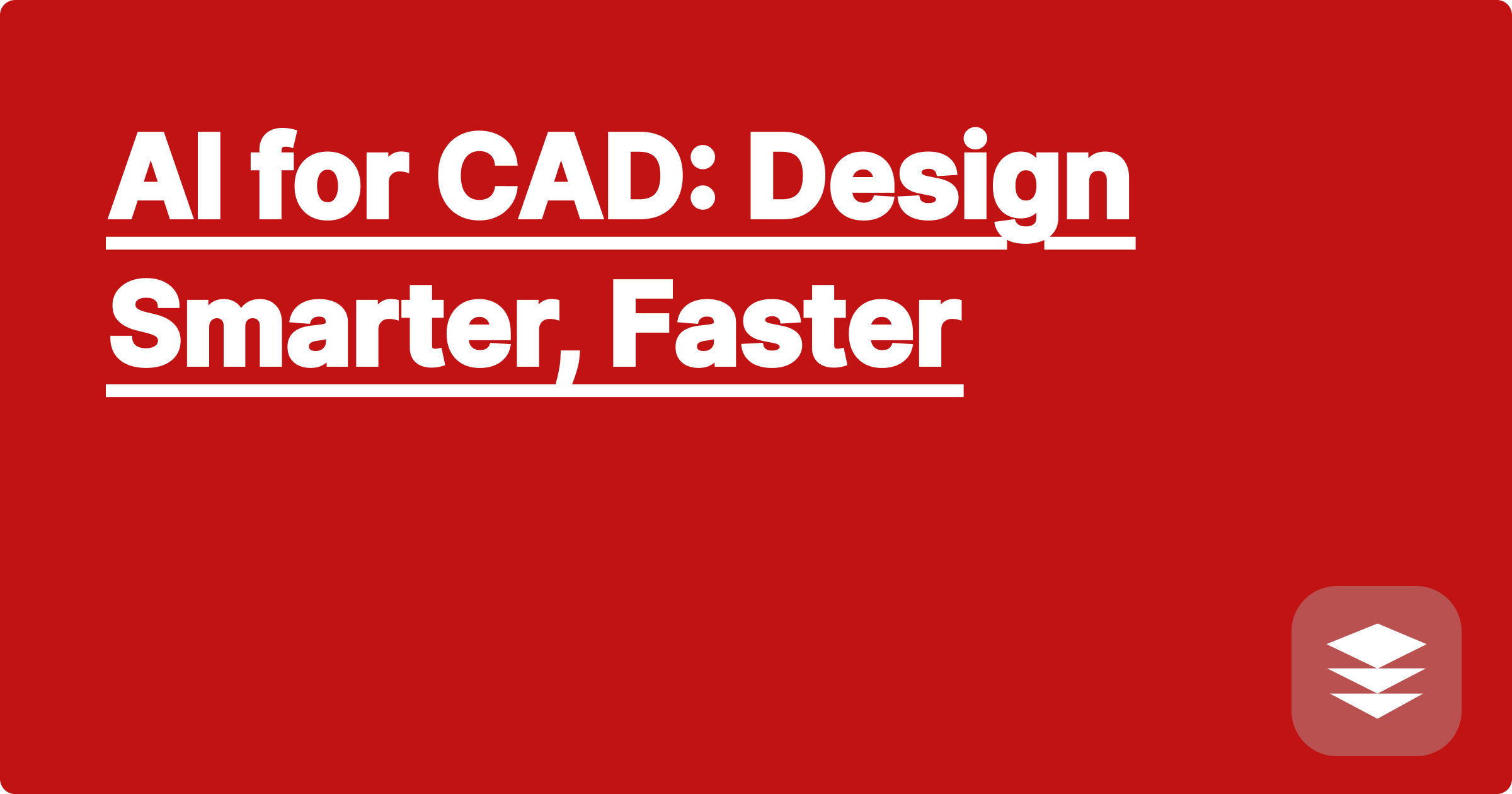
The world of STEM research is a demanding one, often requiring countless hours spent designing, simulating, and analyzing complex systems. For students and researchers, especially those at the graduate level, this can feel like an uphill battle. Traditional Computer-Aided Design (CAD) software, while powerful, can be time-consuming and require significant expertise to master. Imagine a world where AI assists you in every step of the design process, from generating initial concepts to optimizing performance parameters. This is the promise of AI-powered CAD, a game-changing technology poised to revolutionize how we approach design and engineering.
The integration of AI into CAD workflows offers unprecedented opportunities to streamline the design process, accelerate innovation, and ultimately, achieve better results. This shift is particularly crucial for STEM students and researchers who are constantly pushing the boundaries of knowledge and seeking more efficient ways to conduct their work. By harnessing the power of AI, they can significantly reduce the time spent on tedious and repetitive tasks, freeing up valuable time for more critical aspects of their research, like data analysis and interpretation. This blog post will explore the transformative potential of AI in CAD and provide practical strategies for STEM students and researchers to leverage these tools for maximized productivity.
Traditional CAD workflows often involve a laborious iterative process. Engineers and designers start with an initial concept, then manually refine it through numerous simulations and analyses. This process can be incredibly time-consuming, especially when dealing with complex geometries or intricate systems. Furthermore, the traditional approach often relies heavily on human intuition and experience, which can introduce biases and limit exploration of the full design space. Finding the optimal design parameters can be like searching for a needle in a haystack, requiring extensive trial and error. This challenge is amplified for STEM students and researchers who are often working with limited time and resources. They need tools that can accelerate the design process and empower them to explore a wider range of possibilities.
AI offers a powerful solution to the limitations of traditional CAD. AI-powered CAD tools can automate many of the tedious and repetitive tasks involved in the design process, such as generating initial designs, optimizing parameters, and even predicting performance. Tools like generative design algorithms, powered by machine learning, can explore a vast design space, identifying innovative solutions that humans might overlook. For example, imagine using a tool like a hypothetical "GPAI" (Generative Partner AI) that integrates with existing CAD software. You could provide GPAI with design constraints and objectives, and it would generate a range of design options that meet those criteria. Moreover, GPAI could continuously learn from your feedback, refining its suggestions and improving its performance over time. Other tools like ChatGPT can assist in writing code for simulations or generating reports, while Wolfram Alpha can be used for complex calculations and data analysis.
Integrating AI into your CAD workflow can be surprisingly straightforward. First, identify the specific tasks in your design process that are most time-consuming or challenging. These might include generating initial designs, performing simulations, or analyzing results. Next, research AI-powered tools that can address these specific needs. For example, if you are struggling with generating initial designs, explore generative design software. If you are spending too much time on simulations, look for AI-powered simulation tools. Once you have identified the appropriate tools, familiarize yourself with their functionalities and interfaces. Many AI-powered CAD tools offer tutorials and documentation to help you get started. Start with a simple project to test the capabilities of the tool and gradually incorporate it into more complex workflows. Remember to document your process and track the impact of AI on your design efficiency and outcomes.
Consider a mechanical engineering student designing a lightweight robotic arm. Using traditional CAD, this would involve manually iterating through numerous design variations, testing each one for strength and weight. With AI-powered generative design, the student could simply input the desired specifications, such as load capacity and range of motion, and the AI would generate a range of optimized designs, potentially exploring unconventional geometries that a human designer might not have considered. In another example, a chemical engineering student could use AI-powered simulation tools to predict the performance of a chemical reactor under different operating conditions. This would allow them to optimize the reactor design without needing to perform numerous costly and time-consuming physical experiments. Finally, a bioengineer designing a prosthetic limb could leverage AI to analyze patient-specific data and create a customized design that maximizes comfort and functionality.
Embrace AI as a collaborative partner in your research. Don’t be afraid to experiment with different tools and approaches. Start small and gradually incorporate AI into your workflow. Document your process and track the impact of AI on your productivity and research outcomes. Share your experiences with your peers and contribute to the growing community of AI-powered STEM researchers. Remember that AI is a tool, and its effectiveness depends on how you use it. By combining your domain expertise with the power of AI, you can unlock new levels of innovation and accelerate your research journey.
To conclude, AI is transforming the landscape of CAD and offers tremendous opportunities for STEM students and researchers. By embracing these powerful tools, you can design smarter, faster, and ultimately achieve more impactful research outcomes. Start exploring the world of AI-powered CAD today and unlock your full research potential. Don't hesitate to seek out resources and connect with other researchers who are using AI in their work. The future of STEM is AI-powered, and the time to embrace it is now.
AI Math Solver: Get Unstuck Now!
AI Research Notes: Organize Smart
AI for CAD: Design Smarter, Faster
AI Physics Solver: Get Unstuck Now!
AI Lab Assistant: Data Analysis Made Easy
AI Math Tutor: Conquer Complex Problems
AI for Simulations: Optimize Experiments
AI Chemistry Solver: Ace Your Homework